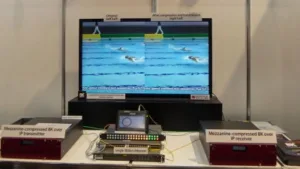I just returned from my 24th consecutive visit to the NAB Show in Las Vegas and left with a lot to think about.

This was one of the quietest NAB shows I’ve ever attended from a news standpoint. The central and north halls had light traffic most of the time, but the south halls were jammed with visitors to numerous booths promoting video compression and streaming.
And that shouldn’t be surprising: The television and film industries, along with broadcast facilities and post-production and effects houses, are on the cusp of a radical transition from serial data transmission of deterministic video to packets streaming through fast switches over TCP/IP networks.
Accordingly, there were plenty of IT-related vendors trying to convince everyone to take the plunge. Some NAB exhibitors have staked their entire business model on it, with flashy exhibits featuring H.265 and JPEG-based codecs, cloud media storage and retrieval, high dynamic range (HDR) imaging, and production workflows (editing, color correction, and visual effects); all interconnected via an IT infrastructure.
 8K Mezzanine Compression through a 10GB switch Image:Pete Putman
8K Mezzanine Compression through a 10GB switch Image:Pete Putman
And, of course, there is now a SMPTE standard – ST2110 – for transporting professional media over managed AV networks (note the word “managed”). The pertinent documents that define these standards are (to date) SMPTE ST 2110-10/-20/-30 for addressing system concerns and uncompressed video and audio streams, and SMPTE ST 2110-21 for specifying traffic shaping and delivery timing of uncompressed video.
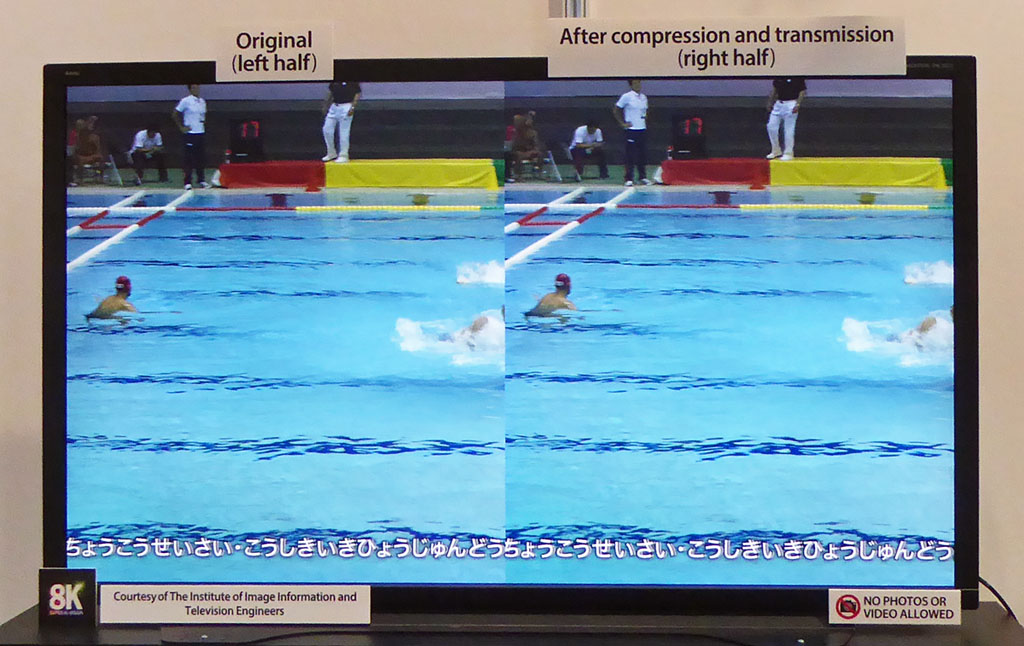 8K Mezzanine compression TCU display screen, Image:Pete Putman
8K Mezzanine compression TCU display screen, Image:Pete Putman
SDI Lives On
Other exhibitors at NAB aren’t entirely convinced and extolled the virtues of next-generation SDI (6G, 12G, and even 24G). Their argument is that deterministic video doesn’t always travel well with the non-real-time traffic you commonly find on networks. And the “pro” SDI crowd may have an argument, based on all of the 12G connectivity demos I saw.
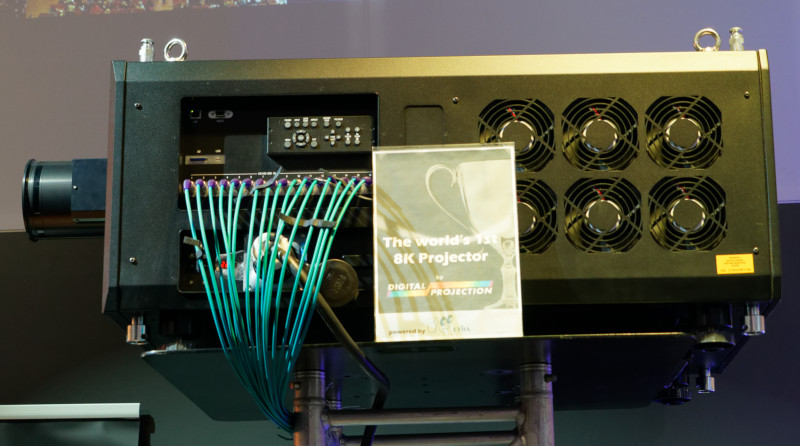 At ProLight & Sound, Digital Projection showed 8K over SDI using a lot of cables! Image:Meko
At ProLight & Sound, Digital Projection showed 8K over SDI using a lot of cables! Image:Meko
3G video, to be more specific, runs at about 2.97 Gb/s, so a 12G connection would be good for 11.88 Gb/s – fast enough to transport an uncompressed 4K/60 video signal with 8-bit 4:2:2 color or 10-bit 4:2:0 color. The challenge to date has been to manufacture suitable cables for the transport of 12G SDI signals that will meet signal-to-noise (S/N) specifications. Moving to optical fiber is one way around the problem, but it appears most of the demos I saw relied on coaxial connections.
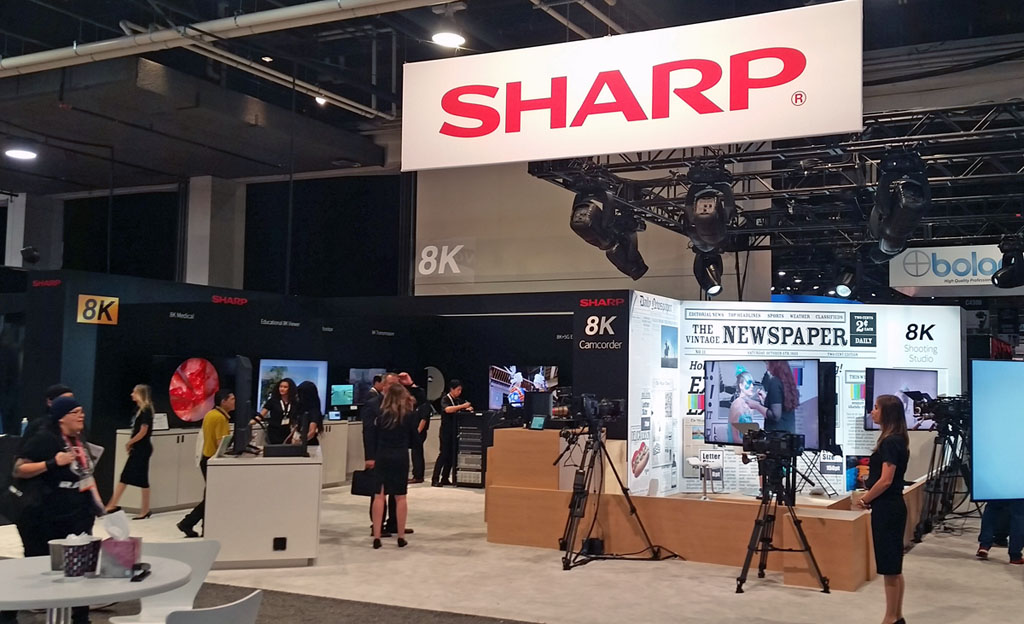 Sharp’s booth emphasised 8K Image:Pete Putman
Sharp’s booth emphasised 8K Image:Pete Putman
8K at Sharp and NHK
Leaving the SDI vs. IT fray for a while, I was pleasantly surprised to see Sharp exhibiting at NAB, showing an entire acquisition, editing, production, storage, and display system for 8K video. Sharp’s 8K broadcast camera, the 8C-B60A, will be used extensively during the 2020 Tokyo Olympics and uses a single Super 35mm sensor with effective resolution of 7680 x 4320 pixels arrayed in a Bayer format.
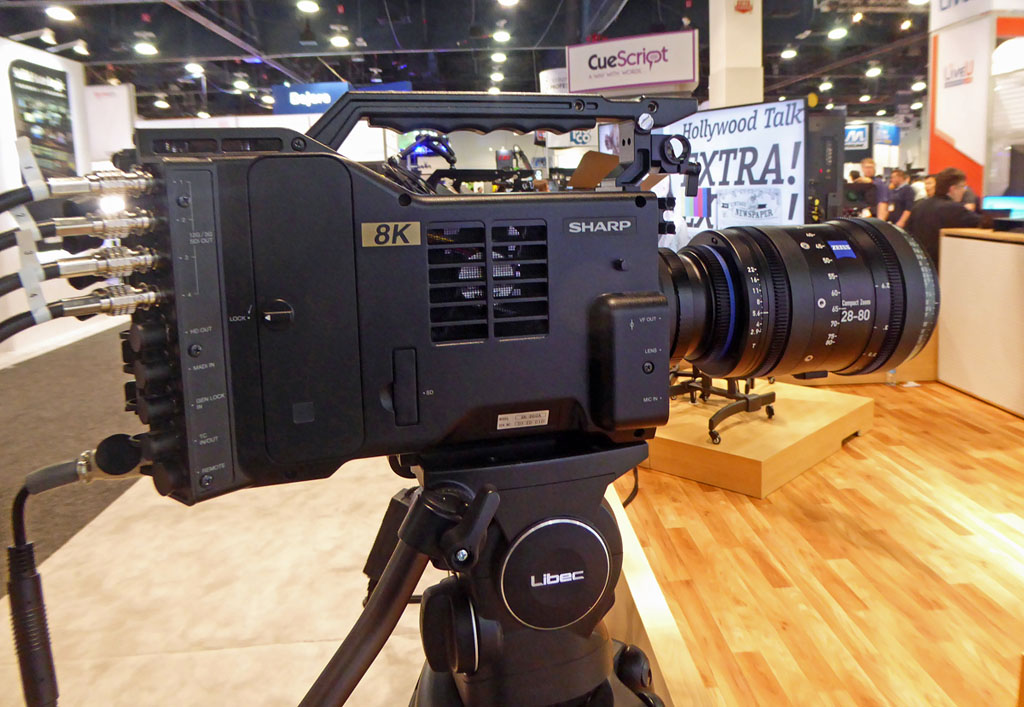 Sharp’s 8K Broadcast Camera SV will be used at the Olympics. Image:Pete Putman
Sharp’s 8K Broadcast Camera SV will be used at the Olympics. Image:Pete Putman
That’s 16 times the resolution of a Full HD camera, which means data rates that are 16x that of 3G SDI. In case you are math challenged, we’re talking around 48 Gb/s of data for a 4320p/60 video signal with 8-bit 4:2:2 color, requiring four 12G connections. Like they say at the dragstrip, “Now THAT’S fast!” It’s so fast that you can’t even use an expensive 40 Gb/s network switch to port this signal over an IT network.
Indeed; light compression must come into play to get that number down to a manageable level. Tico (Tiny Codec) is a good candidate – 4:1 TiCo compression would pack that 8K signal back down to 12 Gb/s. JPEG2000 4:1 would do the same thing, and both are low-latency codecs and similar to each other in how they work. For that matter, 4:1 compression would drop a 4K/60 signal down to 3G levels, making it a heckuva lot easier to switch.
 Sharp’s 8K Video Wall Panorama. Image: Pete Putman
Sharp’s 8K Video Wall Panorama. Image: Pete Putman
In the NHK booth, you could watch a demonstration of 8K/60 video traveling through a 10 Gb/s switch using so-called mezzanine compression based on the Tico system. In this case, NHK was using 5:1 Tico compression to slow down a 40 Gb/s 8K/60 video stream to 8 Gb/s. Even my 48 Gb/s example from earlier would make it under the bar at 9.6 Gb/s.
How about Aptovision’s Blue River NT technology, currently sweeping through the AV industry? It features a codec adapted from VESA’s Display Stream Compression (DSC) that uses a compression ratio of 2:1 to squeeze a 4K/60 10-bit 4:4:4 video stream through a 10 Gb/s switch. I haven’t seen anyone try this codec with an 8K video source yet, but it may be possible: DSC can compress video by as much as 3:1 while remaining visually lossless with very low latency.
The (Compressed) Elephant in the Room
The real elephant in the room is AV-1; an open source, royalty-free codec standard proposed by the Alliance for Open Media (AOM). This group, which counts among its members Google, Mozilla, Apple, Facebook, and Microsoft, feels that the adoption of HEVC H.265 is taking entirely too long to roll out (mostly due to the MPEG-LA licensing group, from what I hear) and is consequently stifling innovation along with a move to 4K video over networks. (Get Ready for a New Codec)
At NAB, I had a long conversation with Gabe Frost from Microsoft and several other AOM members to determine how a trove of patents and intellectual property revolving around H.265 can simply be thrown open to anyone who wants to use them. (Think of the capital investments some H.265 developers have made into parts of the codec that would be stranded by such a move.) The responses I got were more along the lines of “there will be some losers along with winners.” I did find it amusing however that AOM is currently building up a large legal defense fund for the inevitable patent infringement suits.
Summing up, NAB 2018 was all about uncertainty – IT vs. SDI, codec vs. codec, 4K vs. Full HD – along with distractors like 8K. Where do we go from here?

